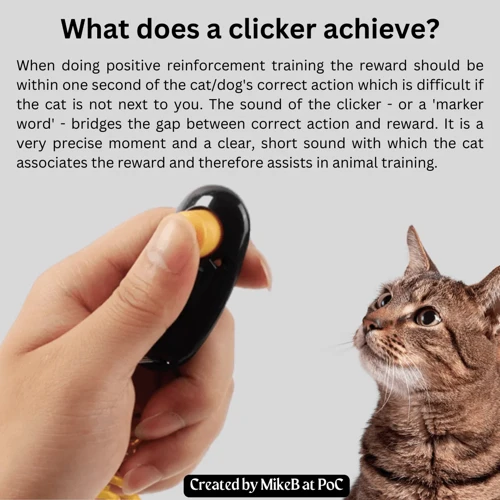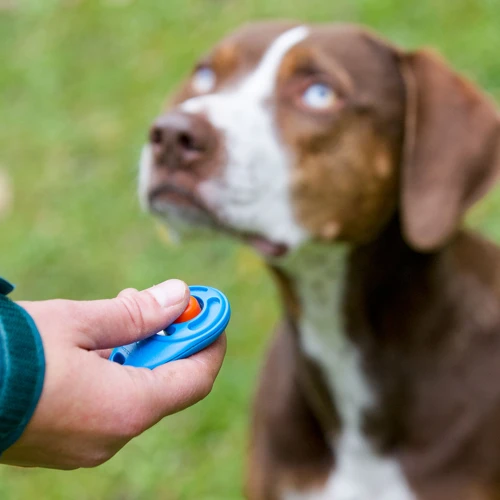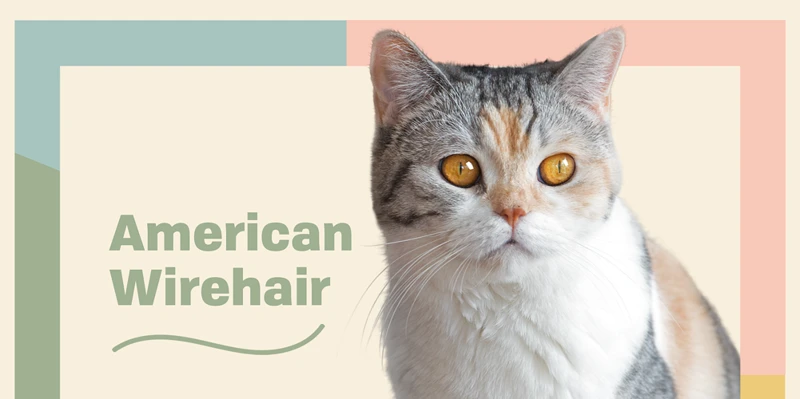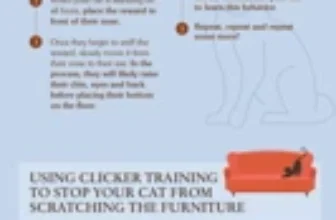As a dog owner, it can be challenging to train your furry companion to behave in the way you want. However, one effective approach to training is using a clicker. But, what exactly is a clicker, and how does it work? In this article, we’ll take a closer look at clicker training and explore the essential behaviours you can teach your American Wirehair using this method. We’ll also discuss how to use a clicker, common challenges faced during training, and effective tips to make this approach more successful. So, grab your clicker and let’s get started on this exciting training journey!
What is a Clicker?

When it comes to training your American Wirehair, you may have heard of a tool called a clicker. But what exactly is a clicker and how does it work? A clicker is a small handheld device that emits a distinct clicking sound when pressed. While it may seem like a simple tool, it has become increasingly popular among pet owners for its effectiveness in training. In the following sections, we’ll explore the mechanics of clicker training and why it could be beneficial for your American Wirehair. But first, let’s dive deeper into what a clicker actually is. Find out more about clicker training for American Wirehairs here.
How Does It Work?
Clicker training is a unique positive reinforcement training method that uses a small handheld clicker device that makes a clicking sound when pressed. It is a light, inexpensive device that serves as an event marker. The sound of the clicker helps the cat understand the exact moment when it has done something correctly. It is a proven training method that is based on scientific principles of animal behavior.
When a cat performs the desired behavior, such as sitting, the trainer clicks the clicker and immediately rewards the cat with a treat or praise. Over time, the cat learns to associate the sound of the clicker with the reward and the behavior that led to the reward.
One of the benefits of clicker training is that it allows the cat to understand what you want quickly and easily. It is a gentle, humane way of training your cat that doesn’t involve punishment or coercion. With consistent practice, the cat learns to offer the desired behavior without the need for physical force or punishment.
Clicker training can be used to teach a variety of behaviors such as sit, come, stay, and more advanced behaviors such as walking on a leash or retrieving objects. The training can be done anywhere, at any time, making it a highly convenient method of training your American Wirehair.
It is important to use the clicker correctly during training. The click sound should always be distinctly audible, consistent, and timed accurately. The timing of the click is crucial, as it marks the exact moment of the desired behavior. Clicking too soon or too late can confuse the cat and slow down the learning process.
To get started with clicker training, you will need a clicker, treats that your cat likes, and a quiet environment without distractions. It is also crucial to keep the training sessions short, so the cat doesn’t lose interest or become over-stressed.
Clicker training is an effective and humane method of training your American Wirehair. It is easy to learn and use, and it offers a way of communicating with your cat clearly and effectively. With the right tools and consistent practice, you can train your cat to perform a range of behaviors that will make both you and your cat happier. If you want to learn more about the benefits of clicker training for American Wirehair cats, check out our article on the benefits of clicker training.
Why Use A Clicker for Training?
Using a clicker for training is an effective way to teach your American Wirehair cat essential behaviors. It helps to establish positive reinforcement, which makes learning more enjoyable for your cat. So, why should you use a clicker?
| Benefits of using a clicker for training |
|---|
| Clear communication: A clicker’s sound is unique and consistent, making it easy for your cat to understand when they have done the desired behavior. It signals the exact moment when your cat did something right, which helps your cat learn more quickly. |
| Positive reinforcement: Clicker training is a positive reinforcement technique, meaning that it encourages good behavior through rewards. It fosters a sense of trust and bonding between you and your cat, creating a more harmonious relationship. |
| Fun and engaging: Using a clicker can make training more enjoyable for both you and your cat. You will feel accomplished once your cat learns a desired behavior, and your cat will love the treats and attention they receive for doing something good! |
Compared to other training methods, such as punishment or negative reinforcement, clicker training is more humane and less stressful for your cat. It helps to avoid any physical harm and builds a better relationship with your furry friend. You can read more about the benefits of clicker training for kittens here.
However, using a clicker for training may not be without its challenges. It is important to be aware of the common mistakes made during clicker training, which we’ll look at in detail in the section on “Do’s and Don’ts of Clicker Training“. Despite these challenges, clicker training is still the preferred method for teaching your American Wirehair cat essential behaviors. Let’s explore some of these behaviors in detail.
Essential Behaviours to Train Your American Wirehair using A Clicker

When it comes to training your American Wirehair, there are several essential behaviours that can be achieved using a clicker. The clicker is a simple and effective training tool that allows you to communicate with your cat and reinforce desired behaviours. By incorporating positive reinforcement techniques and consistent training sessions, you can train your American Wirehair to perform various tricks and commands. Let’s explore the essential behaviours that can be taught using a clicker and how to effectively train your cat to master them. To learn more about how clicker training compares to other training methods, check out our article on Clicker vs. Other Training for American Wirehair.
Sit
Teaching your American Wirehair to sit on command is an important and helpful behavior to train. Here are the steps to train your cat to sit using a clicker:
- Start by gathering some treats that your cat likes. Hold a treat close to their nose, so they can smell it and know it’s there
- Then, slowly move the treat up and back towards their tail. This will cause your cat to naturally lower their bottom to the ground, and eventually, sit
- As soon as your cat’s bottom touches the ground, use the clicker and say “good sit” in a strong, clear voice, while giving them the treat immediately afterward
It’s important to repeat this process several times in a row, until your cat can consistently sit on command when you present the treat. Throughout this process, it’s essential to be patient with your cat. Every cat will learn at their own pace, so take time to encourage, praise, and reward them for their progress.
To make the training more effective, you can use a verbal cue or hand signal, such as raising your hand in the air, when you present the treat. This will help your American Wirehair cat understand that they should sit when given this specific cue or signal.
It’s important to note that you should never force your cat into a sit or use physical punishment. This can create fear and may cause them to become resistant to training.
Also, keep in mind that training takes repetition and patience. Don’t be discouraged if your cat doesn’t learn overnight. With time and consistent reinforcement, your American Wirehair can become a pro at sitting on command.
Come
One of the most important behaviors to train your American Wirehair using a clicker is teaching them to come when called. This is essential for their safety and to prevent them from running away or getting into dangerous situations.
Step 1: Start training in a quiet area with minimal distractions.
Step 2: Say your cat’s name followed by the command “come” in a clear, friendly tone of voice.
Step 3: As your cat begins to move towards you, press the clicker and immediately give them a treat.
Step 4: Repeat this process several times, gradually increasing the distance between you and your cat.
| Training Tip: | Make sure to always reward your cat when they come to you, even if they took a while to respond. This will reinforce the behavior and encourage them to come more quickly in the future. |
|---|
Step 5: Once your cat is reliably responding to the command “come” in a quiet environment, you can begin practicing in more distracting areas.
| Training Tip: | If your cat does not respond to the command, resist the urge to chase or punish them. Instead, simply go get them and bring them back to the starting point to try again. |
|---|
Step 6: Gradually increase the distance between you and your cat, continuing to use the clicker and treats to reinforce the behavior.
Step 7: Practice the “come” command regularly to keep it fresh in your cat’s mind and to maintain their response.
Training your American Wirehair to come when called with a clicker is an important behavior to teach. With patience and regular practice, your cat will quickly learn to respond to your command and come running to you when called.
Stay
One essential behavior to train your American Wirehair is the “Stay” command. This command teaches your cat to remain in a particular position until you release them from it. Training your cat to stay can be particularly useful when you need them to remain in one place, whether it’s at the vet’s office or during a photo session.
Step 1: Begin by first training your American Wirehair to “Sit” command. Once your cat is in the sitting position, use the command “Stay” while holding your hand up as if signaling them to stop.
Step 2: Use the clicker to indicate when your cat has successfully remained in the “Stay” position. While your cat is in the “Stay” position, offer them treats and praise to encourage them to remain still until you release them.
| Do’s | Don’ts |
|---|---|
| Start training your American Wirehair in a quiet and distraction-free environment. | Don’t force your cat to stay for too long during the initial training stages. |
| Make sure the “Stay” command comes after “Sit” command. | Don’t yell at your cat if they break the “Stay” command, as this will discourage them from trying again. |
| Practice gradually increasing the duration of the “Stay.” | Don’t give up if your American Wirehair struggles with the “Stay” command at first. |
Step 3: Gradually increase the duration of the “Stay” command, rewarding your cat each time they remain in position for a more extended period of time. Start with short periods and gradually increase them to longer durations.
Step 4: Once your American Wirehair is proficient in staying still for a more extended time, begin adding distance. Try stepping away from your cat for a few seconds at a time, gradually lengthening the time and distance over time.
By following these steps, you can effectively train your American Wirehair to stay still in any situation. However, it’s crucial to remember that your American Wirehair may need more time and patience to master the “Stay” command, and that’s okay. By practicing consistently and remaining positive, your cat will learn this important behavior.
Loose Leash Walking
Teaching your American Wirehair to walk on a loose leash is crucial for enjoyable and stress-free walks with your furry friend. It involves training your cat to walk calmly beside you without pulling or tugging on the leash. Here are some steps to help you train your American Wirehair for loose leash walking:
- Get the Right Equipment: It is important to use the right type of collar or harness for your cat. Avoid using retractable leashes, as they can encourage your cat to pull. A front-clip harness or a well-fitted collar is ideal for training your cat to walk calmly on a leash.
- Start Indoors: Begin training your cat in a quiet, distraction-free room. Put your cat on a leash and give her some treats. As she starts to move, walk with her and reward her for staying near you. Gradually increase the distance between you and your cat, rewarding her for following you calmly.
- Move to the Outdoors: Once your cat is comfortable walking with you indoors, move the training outside. Start in a quiet area with fewer distractions, such as your backyard. Reward your cat for walking beside you on a loose leash. Use treats or toys to encourage her to follow you.
- Be Consistent: Consistent training is the key to success. Ensure that you give your cat enough time to get trained, and that you train with her regularly. Make sure you’re using the same command each time you want your cat to walk on a leash. Use “heel” or “with me” to indicate to your cat that it is time to walk correctly.
- Take It Slow: Remember to take it slow and not to rush the training process. Your cat may take longer to understand what you want, so be patient. Reward her for even small progress and never scold her for not getting it right immediately.
- End on a Positive Note: Always end the training on a positive note, with a treat or some playtime. Don’t push your cat too hard, and stop as soon as she starts to get bored or frustrated.
Teaching your American Wirehair to walk on a loose leash can be a challenge, but with time, patience, and consistency, you’ll be able to train your cat to walk calmly and comfortably beside you. Remember to constantly reward your cat for good behavior and to stay positive throughout the training process.
Leave It
Teaching your American Wirehair to “leave it” is an important behaviour that can keep them safe in potentially dangerous situations. Whether it’s a tempting piece of food on the ground or a dangerous object your cat wants to play with, “leave it” is a valuable command that can protect your furry friend. Here are the steps to teach your American Wirehair to “leave it” using a clicker:
Step 1: Show the Object
Start by placing a treat or an object on the ground that your cat might be interested in. Tell your cat to “leave it” in a firm but calm voice.
Step 2: Wait for Attention
Your cat might sniff or even paw at the object at first, but eventually, they will realize that the object is off-limits. As soon as they look away from the object and give you their attention, click the clicker and give them a treat.
Step 3: Repeat the Process
Repeat the process with the same object several times until your cat quickly looks away from the object and gives you their attention as soon as you say “leave it.”
Step 4: Introduce Variation
Once your cat is consistently leaving the object on command, start introducing variation. You can place the object in different locations, change the object, or even use a hand signal instead of saying “leave it.”
Step 5: Practice in Real-Life Situations
As your American Wirehair masters “leave it” in controlled settings, it’s time to practice in real-life situations. Take them out on walks and practice “leave it” with tempting objects such as food or toys left on the ground. Eventually, your cat will recognize that “leave it” applies to all objects, not just those they have encountered in training.
Remember to be patient and persistent with training, and your cat will eventually master “leave it” command. Praise and reward them every time they successfully follow the command. With consistent practice, “leave it” can become a life-saving command.
Drop It
When it comes to teaching your American Wirehair to “Drop It” on command, a clicker can come in handy. This behaviour can prevent your furry friend from choking on something or ingesting harmful objects. Here’s how to train “Drop It” using a clicker:
| Step | Action |
|---|---|
| 1 | Hold your pet’s favourite toy, such as a ball or a rope toy. |
| 2 | Encourage your furry friend to hold onto the toy in its mouth by saying, “Take it.” |
| 3 | Show your pet a treat and hold it in front of its nose while saying, “Drop it.” |
| 4 | When your pet eventually lets go of the toy, immediately click the clicker and give it the treat. |
| 5 | Repeat this process until your pet drops the toy every time you say, “Drop it.” |
It’s important to note that you should never take the toy away from your pet’s mouth forcibly. Instead, wait for it to let go on its own. This method reinforces your pet’s willingness to obey you rather than fearing punishment.
Remember: Training your American Wirehair using a clicker should always be an enjoyable experience for both you and your pet. Keep the sessions short and use positive reinforcement to build trust and a bond with your furry friend.
How to Use A Clicker for Training

If you’re new to using a clicker for training your American Wirehair, it may seem a bit confusing at first. However, with the proper guidance and techniques, you can effectively train your cat to exhibit desired behaviors. In this section, we’ll explore the step-by-step method of using a clicker for training, how to time your clicks, along with some crucial do’s and don’ts to keep in mind during the process.
Step by Step Method
When it comes to training your American Wirehair using a clicker, following a step-by-step method is the key to success. Here’s a breakdown of the process in table format:
| Step | Description |
|---|---|
| Step 1: | Choose your training location carefully. Dogs need a quiet, distraction-free environment to learn. |
| Step 2: | Decide on the behaviour you want to train your dog. Start with a simple command like “sit.” |
| Step 3: | Hold the clicker in one hand and a treat in the other. Make sure your hands are behind your back to avoid any distractions. |
| Step 4: | Ask your dog to perform the behaviour. For example, say “sit.” |
| Step 5: | As soon as your dog performs the behaviour, click the clicker and immediately give your dog a treat. |
| Step 6: | Repeat the process. Only click and treat when your dog performs the correct behaviour. |
| Step 7: | Once your dog has learned the behaviour, start phasing out the treats. Click consistently, but only give treats occasionally. |
| Step 8: | Practice the behaviour in different locations with increasing distractions to ensure your dog has truly learned the behaviour. |
Remember to keep training sessions short and fun, and always end on a positive note. With consistency and patience, your American Wirehair will quickly learn essential behaviours using a clicker.
How to Time Your Clicks
One critical aspect of clicker training lies in the timing of your clicks. Here’s a step-by-step guide on how to perfectly time your clicks:
- Observe closely: Keep a close eye on your American Wirehair and study their body language. Observe closely to ensure that you click at the precise moment they perform the desired behavior.
- Click at the right moment: Always click the moment your American Wirehair does the desired action. This helps them to understand which action leads to a reward, thereby reinforcing the behavior you want.
- Avoid clicking late: Don’t click late or too early. Clicking too late can confuse your American Wirehair and reinforce the wrong behavior.
- Practice: Take some time to practice your clicking skills, either by yourself or with an experienced trainer. It’s important to get your timing right to make training more effective.
Adopting correct timing is not always easy and can take a lot of practice. Here are some tips that can help you perfect your timing skills:
- Focus and concentration: Clicker training requires a sound focus and concentration. Ensure you have the required level of mental presence to observe and click at the right moment.
- Use a loud and clear click: Ensure that you use a loud enough click so that your American Wirehair can identify the sound easily. A clear sound will help them associate rewards with the right behavior.
- Use a consistent rhythm: Try using a consistent rhythm while clicking for the desired behavior. This helps maintain a pattern and helps your American Wirehair, resulting in more effective learning.
Remember, clicking at the right time helps avoid confusion and reinforces the desired behavior. With patience and practice, perfecting your timing skills is an achievable goal in clicker training.
Do’s and Don’ts of Clicker Training
When it comes to clicker training your American Wirehair, there are several do’s and don’ts to keep in mind to ensure an effective training experience. Here’s a table outlining what you should and shouldn’t do:
| Do’s | Don’ts |
|---|---|
|
|
Remember, as with any kind of training, consistency and proper technique are key. Keeping these do’s and don’ts in mind will help ensure an enjoyable and effective training experience for both you and your furry friend.
Challenges You May Face during Clicker Training

Training your American Wirehair using a clicker can be a fun and rewarding experience, but like any training method, it comes with its own set of challenges. These challenges can range from boredom to over-excitement, and without proper knowledge of how to overcome them, they can hinder your progress and discourage you from continuing. In this section, we will explore some of the common challenges that you may face during clicker training and provide tips on how to overcome them. So, don’t get disheartened, let’s take on these challenges together!
Boredom
As with any type of training, boredom can become a major issue during clicker training with your American Wirehair. This can happen when you repeat the same exercises over and over again without adding any new challenges to the routine. It’s important to keep your pet engaged and interested in the training process to make sure the training sticks.
Here are some ways you can combat boredom during clicker training:
| Technique | Explanation |
|---|---|
| Introduce New Challenges | Try to introduce new skills and challenges into your training routine regularly. This can include teaching your American Wirehair new behaviours or tricks, or even training in different environments. |
| Keep Sessions Short and Sweet | Don’t make your training sessions too long or repetitive. Keep them short and sweet to maintain your pet’s interest and focus. |
| Use Treats Strategically | Use treats strategically during training, and don’t overfeed your pet to avoid losing interest. You can vary the types of treats you offer to prevent boredom and monotony. |
| Offer Praise and Encouragement | Remember to offer praise and encouragement to your American Wirehair during training. This can motivate your pet to keep learning and trying new behaviours. |
| Take Breaks | It’s important to take breaks during training to avoid burnout. If you notice your pet losing focus, take a break and come back to the training later when they’re feeling more energized. |
Remember, clicker training should be a positive experience for both you and your American Wirehair. By incorporating these techniques and keeping training sessions engaging and interesting, you can ensure your pet remains motivated and excited about learning new behaviours.
Frustration
Frustration is a common problem that can occur during clicker training. When your American Wirehair gets frustrated, they may stop paying attention or become aggressive, making it difficult to continue the training session. Understanding how to handle frustration is crucial to successful clicker training.
Causes of Frustration during Clicker Training
| Cause | Description |
| Unrealistic expectations | Setting goals that are too high for your American Wirehair to achieve can lead to frustration. Start with simple commands and gradually increase the difficulty level as they progress. |
| Training for too long | Long training sessions can be tiring for your cat, leading to frustration and lack of interest. Keep the sessions short and engage in fun activities in between. |
| Inconsistency | Inconsistent training can lead to confusion and frustration for your pet. Make sure you are using the same commands and rewards every time you train. |
How to handle Frustration
When you notice your American Wirehair getting frustrated during training, take a break and switch to something fun like playtime or grooming. This will allow them to relax and recharge. You can also try using a different approach or command when you return to training.
Tips to prevent Frustration
Here are some tips to prevent frustration during clicker training:
- Make sure your cat is well-rested and fed before starting a training session.
- Keep the sessions short and fun.
- Use a variety of rewards to keep your cat interested.
- Be consistent with your commands and rewards.
- Gradually increase the difficulty level of commands as your cat progresses.
- Take breaks and switch to something fun if you notice your cat getting frustrated.
Conclusion
Frustration during clicker training is a common problem that can be prevented with the right approach. Understanding the causes of frustration and how to handle it can help ensure that your American Wirehair enjoys the training sessions and learns essential behaviors effectively. By following the tips mentioned above, you can make clicker training a fun and rewarding experience for both you and your pet.
Over-Excitement
It is common for American Wirehairs to become over-excited during training, which can make it difficult for them to focus and respond to the clicker. Over-excitement can lead to jumping, barking, and pulling on the leash.
Causes of Over-Excitement
Over-excitement can be caused by a variety of factors, including:
| Cause | Description |
|---|---|
| Lack of Exercise | A wired cat is an energetic breed that requires regular exercise. Lack of exercise can lead to pent up energy and over-excitement. |
| Unfamiliar Environment | Training in a new or unfamiliar environment can cause your American Wirehair to become anxious or excited. |
| High-Value Treats | Using high-value treats during training can cause excitement that may be difficult to control. |
How to Address Over-Excitement
There are several strategies you can use to address over-excitement during training:
- Take Breaks: If your American Wirehair becomes too excited during training, take a break and allow them to calm down before continuing.
- Use Treats Wisely: Use lower-value treats during training to avoid over-excitement. Save high-value treats for when your cat completes a more difficult task.
- Exercise Before Training: Make sure your American Wirehair has had enough exercise before training to help prevent pent-up energy and over-excitement.
- Keep Training Sessions Short: Shorter, more frequent training sessions can help prevent over-excitement and keep your cat’s focus on the task at hand.
- Be Patient: Remember that your American Wirehair is still learning and may need time to adjust to the training process. Be patient and consistent with your training, and don’t expect immediate results.
By managing over-excitement during training, you can help your American Wirehair focus and respond to the clicker more effectively.
Tips to Make Clicker Training More Effective
Making clicker training more effective can depend on a variety of factors. Here are some tips for enhancing your training sessions with your American Wirehair using a clicker:
1. Keep training sessions short: American Wirehairs have short attention spans, so it’s best to keep your training sessions brief and focused. Aim for 5-10 minute sessions and gradually increase the time as your pet becomes more comfortable with the training.
2. Positive reinforcement: Remember to use positive reinforcement when training your American Wirehair. Rewarding good behaviour with treats or praise creates a positive association with the training and makes it more effective.
3. Consistency: Consistency is key when it comes to clicker training. It’s essential to use the same clicker sound and treat for every training session. This helps your pet understand what behaviour is expected of them.
4. Focus on one behaviour at a time: Trying to teach too many behaviours at once can be overwhelming for your pet. It’s best to focus on teaching one behaviour at a time until your pet has mastered it before moving on to the next one.
5. Use high-value treats: Using high-value treats, such as small pieces of cooked chicken or cheese, can be a great way to keep your pet motivated during training sessions.
6. Be patient: Training takes time and patience, especially when using a clicker. Remember to be patient and consistent with your training. It’s essential to give your pet time to understand what’s expected of them.
7. Practice in different environments: Practice training your American Wirehair in different environments, such as the backyard, the park, or the beach. This helps your pet generalize the behaviour and understand that the training applies in different settings.
By following these tips, you can make your clicker training sessions with your American Wirehair more effective and enjoyable for both you and your pet.
Conclusion
Wrapping Up
Training your American Wirehair using a clicker can be both an effective and fun way to teach essential behaviours. With the help of a clicker, you can communicate with your feline friend and reward them for their good behaviour.
Remember to be patient and consistent in your training approach. Celebrate small victories and keep building on them. An American Wirehair that has been trained using a clicker is more likely to enjoy learning and be receptive to other training techniques in the future.
It’s important to keep in mind that clicker training should not be the only form of training your pet. It should be part of a comprehensive training plan that includes positive reinforcement, consistency, and patience.
If you face any challenges, such as boredom or frustration, take a break and try again later. Remember to always use positive reinforcement and avoid punishment to ensure that your American Wirehair enjoys training and sees you as a partner, not an enemy.
Overall, clicker training can be a fun and effective way to train your furry friend. With consistency, patience, and positivity, you can teach your American Wirehair essential behaviours that will make both of your lives easier and more enjoyable.
Frequently Asked Questions
Can any breed of dog be trained using a clicker?
Yes, any breed of dog can be trained using a clicker. Clicker training is a dog-friendly and effective method that can be used on any breed of dog.
Is there an age limit for dogs when it comes to clicker training?
No, there is no age limit for dogs when it comes to clicker training. Dogs of any age, whether they are puppies or seniors, can be trained using a clicker.
How long does it take to train a dog using a clicker?
The duration of training varies depending on the dog’s age, breed, temperament, and the behaviors you want to train. Consistency and dedication are key to successful training.
Can clicker training replace other dog training methods?
No, clicker training should not replace other dog training methods. It should be used alongside other training methods to reinforce positive behaviors.
When should I start clicker training with my American Wirehair?
You can start clicker training your American Wirehair as early as 8 weeks old. However, your puppy should have had basic vaccinations and health checks before starting training.
How many clicks and rewards should I give my dog during a training session?
You should give your dog one click and one reward after each behavior that you’re trying to reinforce. Make sure to be consistent with both the timing and number of clicks and rewards.
What kind of rewards should I use during clicker training?
You can use treats, toys, verbal praise or physical touch as rewards during clicker training. Choose rewards that your dog finds exciting and motivating.
What should I do if my dog doesn’t respond to the clicker?
If your dog doesn’t respond to the clicker, try using a different type of clicker or clicker sound. You can also consult a professional dog trainer for advice.
Is there any harm in clicking without giving a reward?
Clicking without giving a reward can cause frustration and confusion in your dog. Avoid clicking without rewarding your dog for the desired behavior.
Can my American Wirehair become reliant on treats for good behavior?
While it’s important to reward good behavior during training, you can gradually reduce the frequency and amount of treats as your dog becomes more consistent in their behavior. This helps ensure your dog is motivated by both the rewards and the bond you share.







